The Arctic Convoy Club
of New Zealand

Veterans of the Arctic Convoys 1941 - 1945


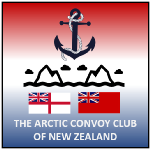
Bill Carson : HMS Trinidad : My Story
Just after midnight on 15 May 1942, Bill Carson, my father, stood on the deck of HMS Trinidad, boots smouldering from the heat of the deck plates as fires raged below. He and hundreds of others from the Royal Navy cruiser were waiting to be rescued by escorting destroyers; the survivors knowing that hatches had to be closed on many of their shipmates. That experience, and the many others of his Arctic convoy duty during the Second World War, were to haunt my father for the rest of his life.
William Matthew Frederick Carson was born in Kaitangata on 23 October, 1919. Most of his life, however, was spent in the market gardens of Otaki, where he and wife Mae (nee Hamlin) raised a family of five children. Bill’s father was manager of the Kaitangata coal mines, affording the large family more generous circumstances than many others in the small south Otago town. If money was generous, compassion was less so, as befitting a strict Presbyterian upbringing.
Young William was sent to the prestigious John McGlashan College in Dunedin as a boarder as soon as he was old enough for secondary school.
It was initially an unhappy experience to be isolated from home, but he soon proved himself a talented athlete and brilliant academic. In his last year at John McGlashan, 1938, he was college dux, and captain of both the rugby and cricket teams. He had the distinction of playing on the wing at rugby outside Ron Elvidge, who went on to captain the All Blacks. They remained lifelong friends.
On graduation from John McGlashan, Bill went to Otago University’s school of mining, where his father expected him to learn the requisite skills to return to Kaitangata’s mines. War in 1939 intervened, however, and Bill soon signed up in Dunedin.
It’s not clear when he left New Zealand, but naval service was on his mind. His preference was likely to have been influenced by his childhood admiration for Ernest Shackleton’s expeditions to the Antarctic. Shackleton had spent some time in Dunedin, where he planned and provisioned for his now famous forays to the ice continent.
Bill arrived in England for naval training at HMS Ganges, the shore-based facility in Shotley, Suffolk, on 28 August 1941 aged 21. Just over six months later, he was soon to join the dreaded Arctic convoys from Scapa Flow in Scotland to Murmansk, Russia. The convoys were to become instrumental in supplying the Soviet Union with war materiel to keep it in the fight with a rampant Nazi Germany, whose troops were threatening to march on Moscow.
In early 1942, the Arctic shipping lanes were deadly waters for the convoys. Although the mighty Bismarck had gone, Germany’s giant battleships such as the Tirpitz, Scharnhorst and Gneiseneau still posed a formidable threat. The ever-present U-boats and the Luftwaffe’s dive bombers operating out of occupied Norway meant no convoy was safe. Air cover for much of the 3000km journey was sparse and often non-existent, and thick ice prevented manoeuvrability into northern waters further away from the German air and naval bases in Norway.
Spring and summer – providing the best cruising conditions – had the disadvantage of long sunlight hours so far north, exposing the convoys to attack But even these months were still terribly cold. I once asked some convoy veterans what they feared the most – the planes above, the ships on the water or the U-boats beneath. “None of those,” they all said. “It was the cold.”
HMS Trinidad in her death throes, 15 May 1942, in a photo taken from the Royal Navy destroyer, HMS Matchless. Note the survivors on the stern of the Trinidad – one of them most likely Bill Carson – waiting to be rescued by the Matchless.
“Next morning we picked up the enemy destroyers and almost immediately sent one to the bottom. I did not see the first, but saw another in full flight and on fire. Our shooting was deadly. Suddenly our ship shook with the shock of heavy explosive – we had been torpedoed! “It was rather grim for a time, bitterly cold with huge lumps of ice floating by.”
The skirmish with the German destroyers was on 29 March. The Trinidad had picked them up on its radar and immediately sped off to engage them in the mist. The Trinidad hit the Z-26, which later sank. However, in the engagement, the Trinidad fired a torpedo which malfunctioned and swung back at the cruiser, hitting it port-side just below the bridge. Thirty-two men died, including 17 in the transmitting station who drowned in a flood of oil. The memory of shipmates in the oil was one my Dad was to recount sadly years later. Among those dead was a fellow New Zealander, A C Dick of Auckland, with whom Dad had trained at HMS Ganges. The torpedo incident was kept secret for some time, and if Dad knew, he would have been under instruction not to write home about it.
Were it not for the tragedy of it, the torpedo incident might have been comical. The Trinidad was to be known as the only ship in the war to torpedo herself. And if not for the mishap, it might have been quite a different war for her crew, and for the Royal Navy, which was to lose one her finest and most modern ships at a critical time in the war.
Badly damaged, and chased by U-boats, the Trinidad limped into Murmansk on 30 March. She spent more than a month there having temporary repairs, some of which were possible with plates brought from Britain by the cruiser HMS Edinburgh. On her return voyage, escorting QP11, the Edinburgh was torpedoed by U-456 and finally sunk by German destroyers, among them Z-24 and Z-25, the two destroyers that escaped the Trinidad in late March. Twenty survivors of the Edinburgh returned to Murmansk and joined the Trinidad for a journey that was to take her to the United States for further repair. She left on 13 May. The next day, enemy “spotter” aircraft and U-boats were sighted. By 9pm, and with plenty of daylight still left in the day, waves of Junker 88s and Stukas began bombing the cruiser, showering it with shrapnel. My father recalls the planes being so close as they dived that he could see the eyes of the pilots. Enemy they were, but Dad always said “they were brave buggers”.
After several hours of horrific noise with antiaircraft fire and bombs raining around the ship, a cluster of bombs finally found their target. One hit the Trinidad just forward of the bridge, crashing through the decks and exploding where the Edinburgh survivors were sheltering. All were killed instantly. The Trinidad was in its death throes. To prevent the fires spreading, hatches were ordered closed with men still beneath.
Captain Leslie Saunders ordered the ship to be abandoned. Forty-three of her crew had died, plusthe 20 Edinburgh survivors. My Dad gathered on the stern awaiting rescue, while the fires continued to rage below decks. At 1.20am on 15 May 1942, the Trinidad was scuttled by torpedoes from HMS Matchless at 73o 37/ N, 23o 27/ E, sinking to the bottom of the Barents Sea.
Bill returned to England, albeit briefly. My mother believes he was on the ill-fated PQ17 – the convoy that was famously ordered by the Admiralty in July 1942 to scatter under threat of the Tirpitz. She believes he was on the Norfolk, but sketchy service records can’t confirm it. That convoy lost 24 of its 35 merchant ships in a series of heavy enemy attacks. If it was so, the respite was certainly too brief. Having lived the horror of the Trinidad in Arctic waters a world away from rural Otago, Bill would then have had to endure another terrifying convoy. Another New Zealand convoy veteran tells me Dad was with him on Royal Navy duty in November of that same year, this time on the destroyer HMS Malcolm.
The Malcolm and HMS Broke had been given the duty of breaking through the barricades of Algiers. The Malcolm had many New Zealanders on board, and there are accounts of them wearing their rugby jerseys in defiance of naval regulations. Bill would have enjoyed that.
The plan was to land infantry onto the portside in Algiers, hoping to capture the port and prevent destruction by the Vichy French. However, the Vichy forces fired on the ships, damaging them badly. The Malcolm withdrew with 10 crewmen dead. The Broke did manage to land troops, but was again damaged as she also withdrew. Bill, of course, survived and as far as I know took no further part in combat duty. He kept photos from the latter part of the war in Western Africa, at places such as Freetown in Sierra Leone and Dakar, Senegal, where he spent time on riverboat duties.
HMS Trinidad under full steam in 1941, possibly during sea trials. The Trinidad was one of the Royal Navy’s most modern ships, equipped with sophisticated radar and capable of 33 knots. She had twelve 6-inch guns, eight 4-inch guns and six 21-inch torpedo tubes. She also carried two Supermarine Walrus aircraft.
Returning to New Zealand at the end of the war in early 1946, Bill was at a loose end. Like many of his military contemporaries, he had no other work experience, and he didn’t feel inclined to return to academia. He was suffering from what is now known as post-traumatic stress disorder, but an unsympathetic family thought he should “harden up” and simply get on with life.
Post-war New Zealand was full of confused ex-servicemen such as my father. Its population never had to experience the horrors of bombed cities such as London, Dresden or Hiroshima, nor was it occupied like France or Norway. They had no idea what a war could do to the psyche of a serviceman. It’s no wonder these men clammed up and never wanted to talk about the war. Nobody wanted to know then.
Bill spent some time in forestry and on the gold dredges of central Otago, but eventually arrived at Hanmer Springs, where doctors had referred him for mental recovery. It was there he met my mother, nurse Mae Hamlin. They later went to Wellington, my Mum’s home town, and were married in 1948. Bill took up market gardening in the Hutt Valley, and in 1952, with a State Advances loan, the couple and their first child moved to their new property in Te Manuao Road, Otaki. Mae and Bill Carson raised five children on the property, and Dad spent the rest of his life there. He was innovative in his gardening, being one of the first glasshouse owners to install a trickle irrigation system to feed nutrients to his tomatoes. I recall seeing his notebooks full of chemical calculations for the application of fertilizers or sprays – confusing to a youngster, but making perfect sense to my father who had studied chemistry at university.
He encouraged education (all five children gained various degrees of tertiary qualification) and had a keen sense of justice. He loved his sport, especially rugby and cricket, at which he had excelled in younger days. He even cheered for an Australian touring team in the 1960s at Athletic Park because he thought they were playing better rugby. But he never believed the Springbok tour of 1981 was right. My Dad lived mostly happily in Otaki, but he often had bouts variously of anger or depression, and had regular nightmares fed by the memories of his Arctic experiences many years before. I recall recently a market garden colleague telling me he thought my Dad was just a bit slow. Undoubtedly his heavy medication – stock standard for many war veterans – made him seem so, but I remember him as a hard-working, generous and loyal man with a keen intellect and a great sense of humour. He died in 1985 a week after his 66th birthday from “untypical pneumonia” after battling pernicious anaemia for several months. My mother is now 93 and still living independently in Otaki.
With a college dux, university education and sporting prowess, who knows what he might have done if not for the war that scarred a generation of families around the world. He would certainly not want to be remembered as a war hero – his humility wouldn’t allow it. Like so many other war veterans, he was just doing his job, which took him to unexpectedly dark places. Most who knew him remember him as a market gardener of Otaki, but he deserves to be remembered for so much more.
Bill Carson in one of his glasshouses full of tomatoes at 13 Te Manuao Road, Otaki
As told by his son, Ian Carson
Published with permission of the author
Convoy sailors were ill equipped with duffel coats, boots and mittens that had no chance of keeping out the freezing temperatures. Ice regularly formed on the decks and turrets of the warships and merchant ships alike, requiring regular chipping to keep them serviceable. Duty on deck was not a pleasant experience. While much praise over the years has been heaped on the navy veterans, conditions were probably no better – and probably worse – for the merchant ship crews. They relied on the convoy escort to keep them safe, but many of the merchant ships were packed with explosive materials, were slow and sitting ducks for U-boats or planes that could evade the escorts.
In the early days of the war, when a merchant ship was lost, pay stopped immediately for the family. It was reinstated only if the crewman was found to have survived and was fit to work again.
Of the convoys, the American Office of Naval Operations said at the end of the war: “The story of the voyages to Murmansk is one of almost unbelievable horror, of matchless courage, and of unlimited devotion to duty. There is nothing quite like it in all history.”
So on 23 March 1942, the new light cruiser HMS Trinidad (she had been completed for sea duty only in October 1941), sailed out of Scapa Flow flying the flag of Rear-Admiral Bonham-Carter and with a complement of 907 men, including my father and at least 10 other New Zealanders. The Trinidad, along with destroyers HMS Fury and HMS Eclipse, was to escort convoy PQ13 to Murmansk (the return convoys were code-named QP).
Writing to his sister later, Bill gave a terrifying picture of life on this convoy. He told of leaving Scapa Flow on a beautiful evening, but it soon got cold. “It was bitterly cold and heavy seas drove us off our course and the convoy was scattered miles over the sea,” he wrote. “One morning, about 0300, we were called to action stations as word came through that German destroyers were out to attack the convoy. I think it was later we saw a U-boat and fired at it, but it crash-dived and got away. “In the afternoon dive bombers came out and troubled us and the convoy. They did not have a great deal of success however.
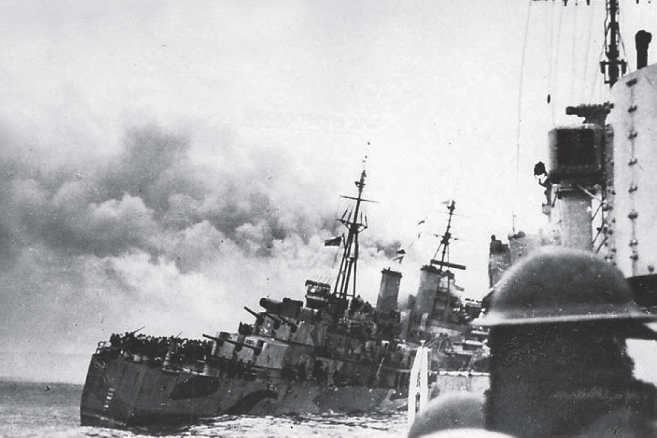
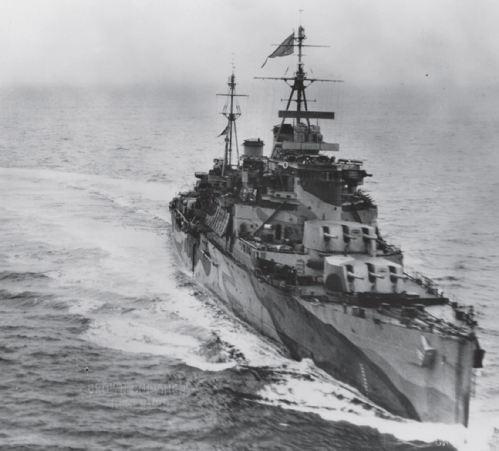
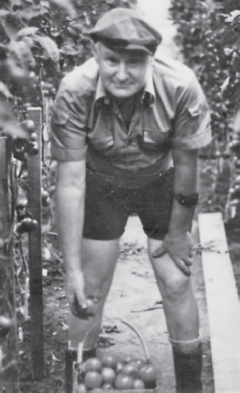
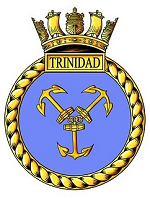
This website is owned by The Arctic Convoy Club of New Zealand © 2004 - 2024
This page updated August 2018

This site uses images in SVG file format.
For best viewing results, please ensure you are using the latest version of your web browser.









